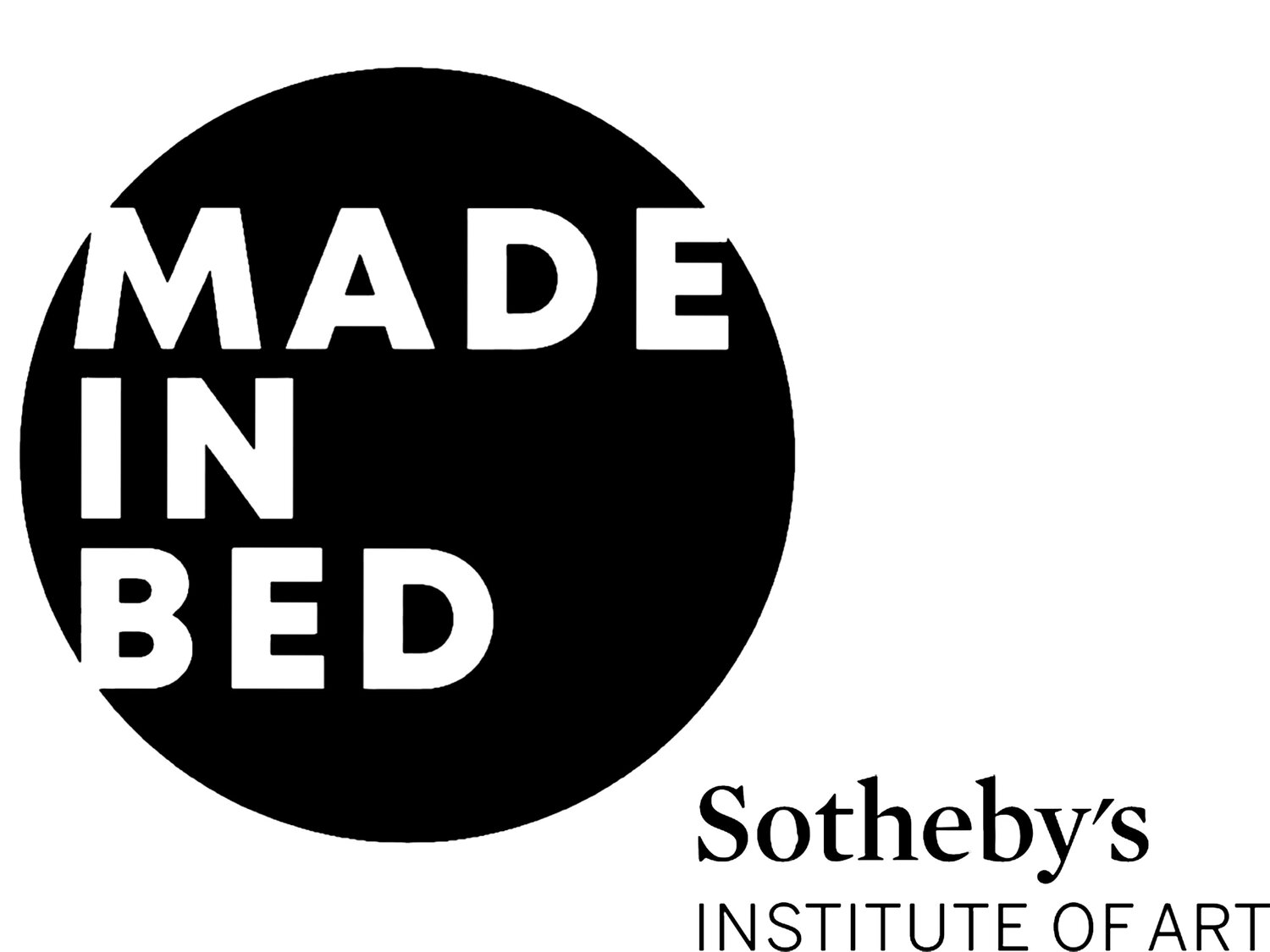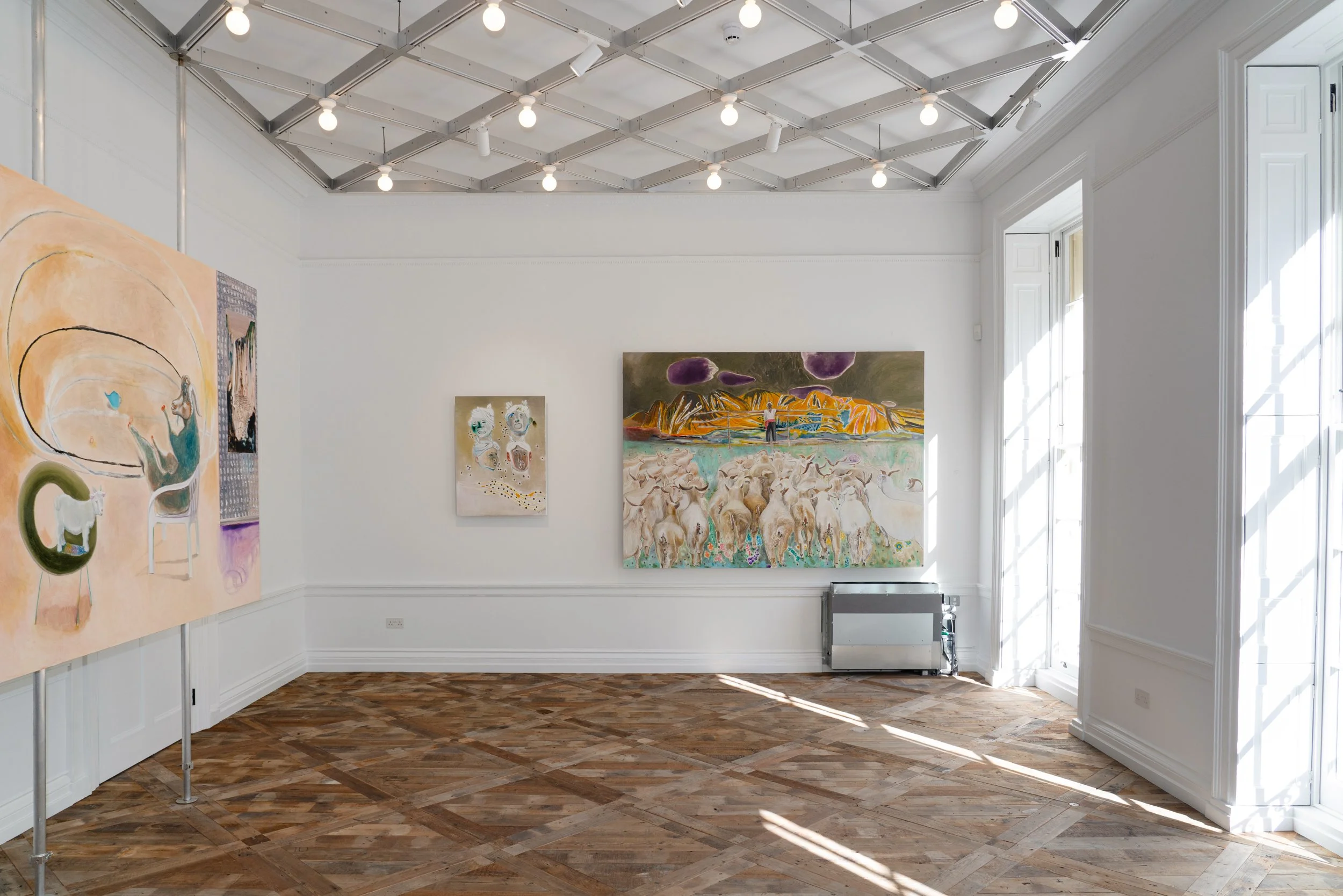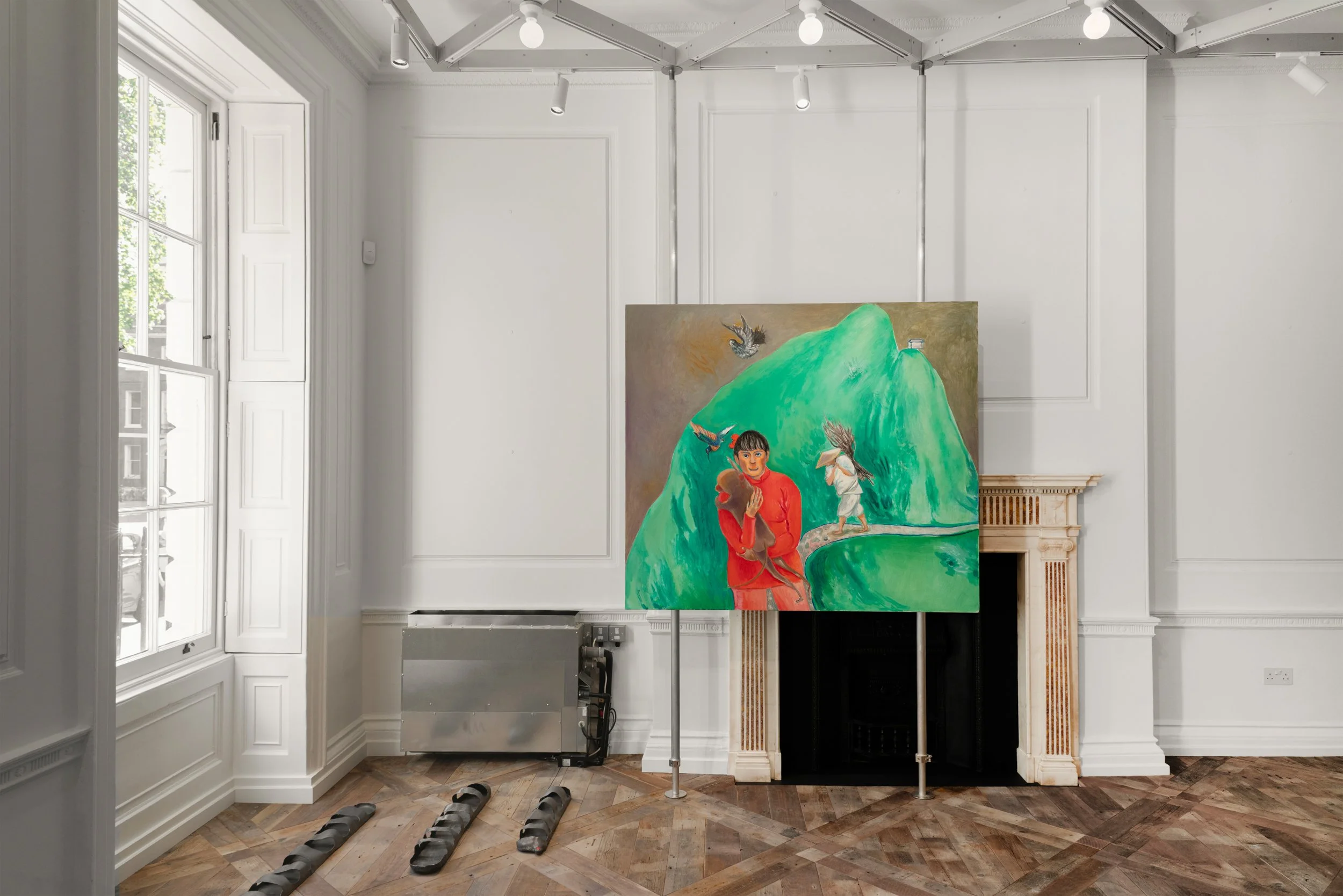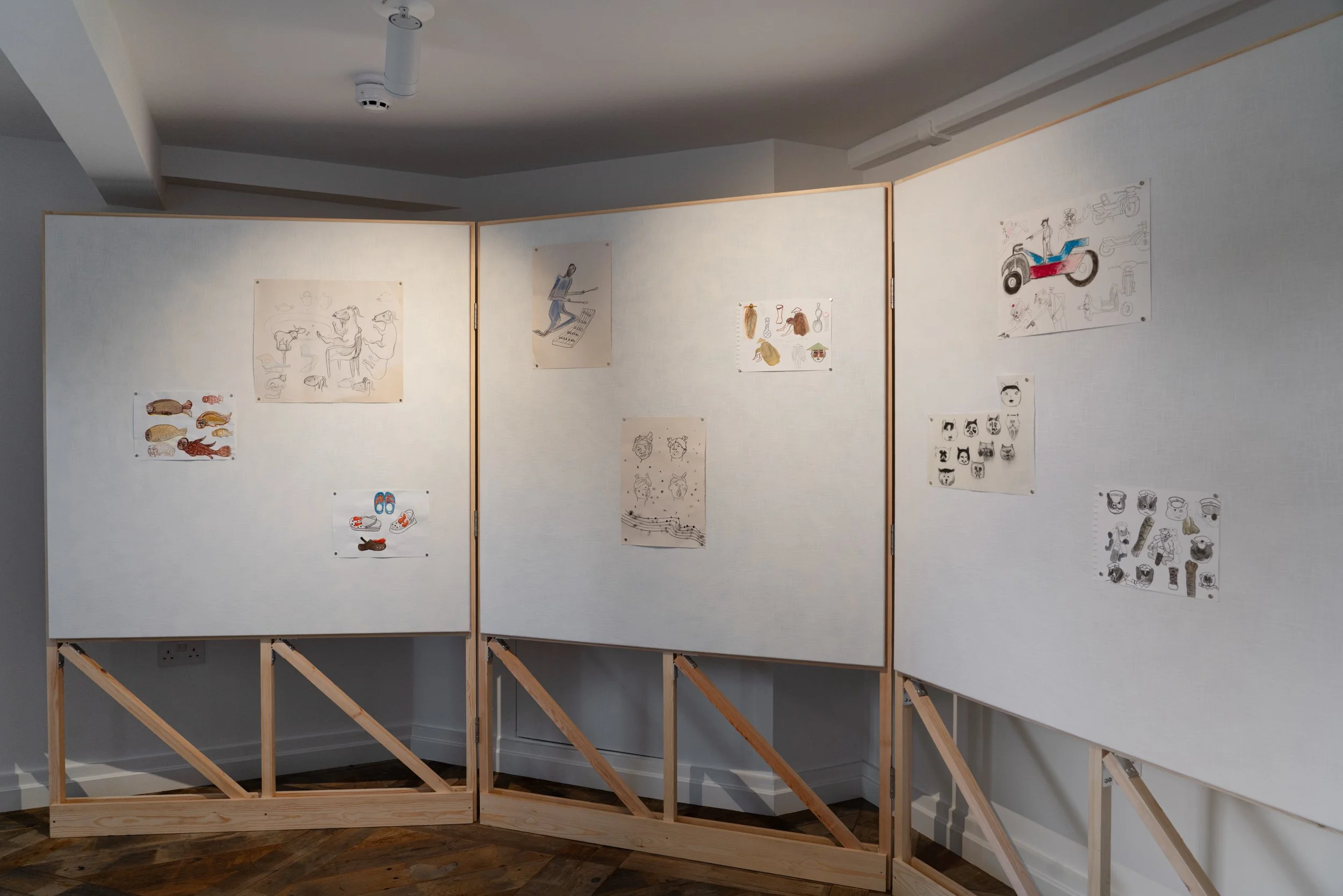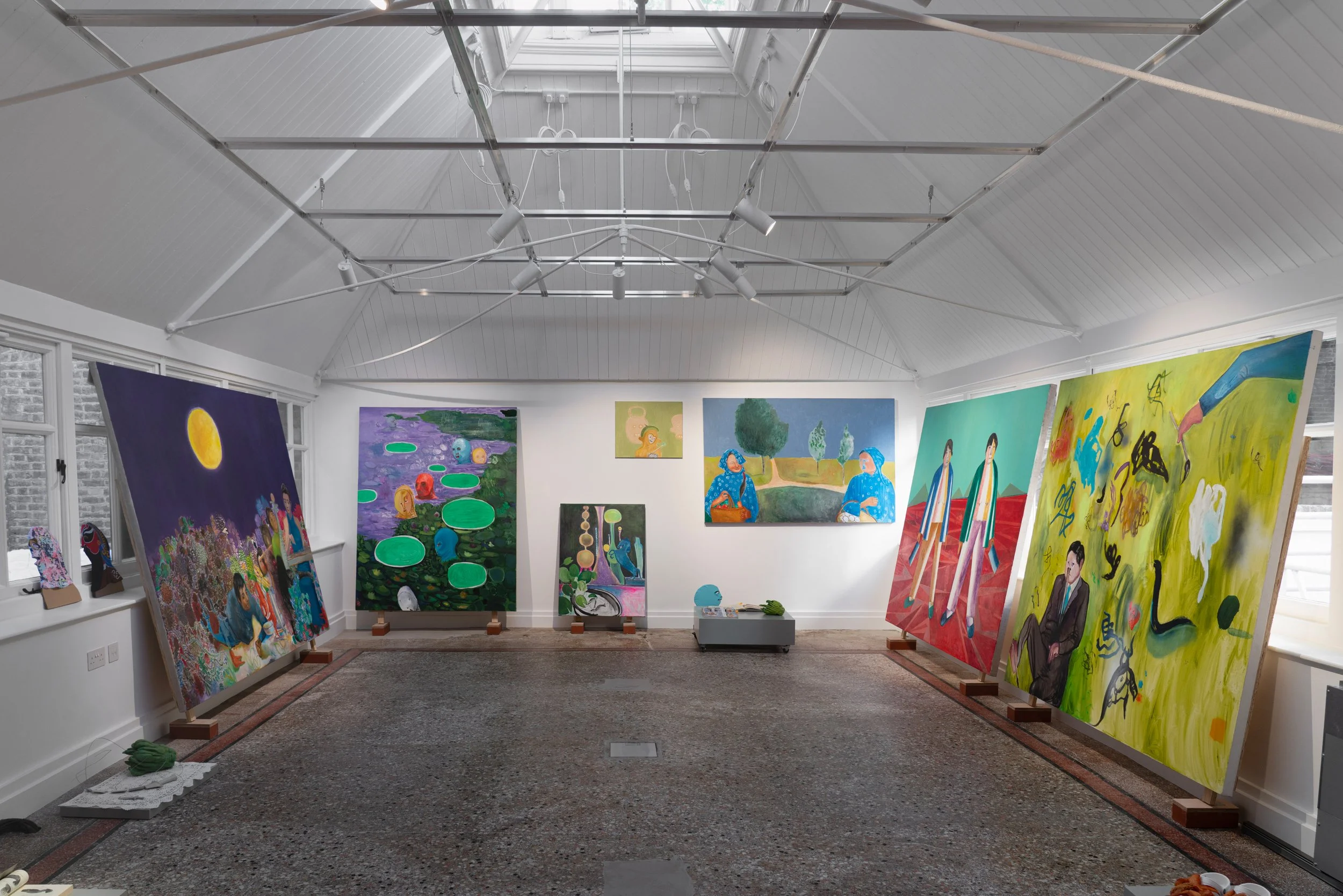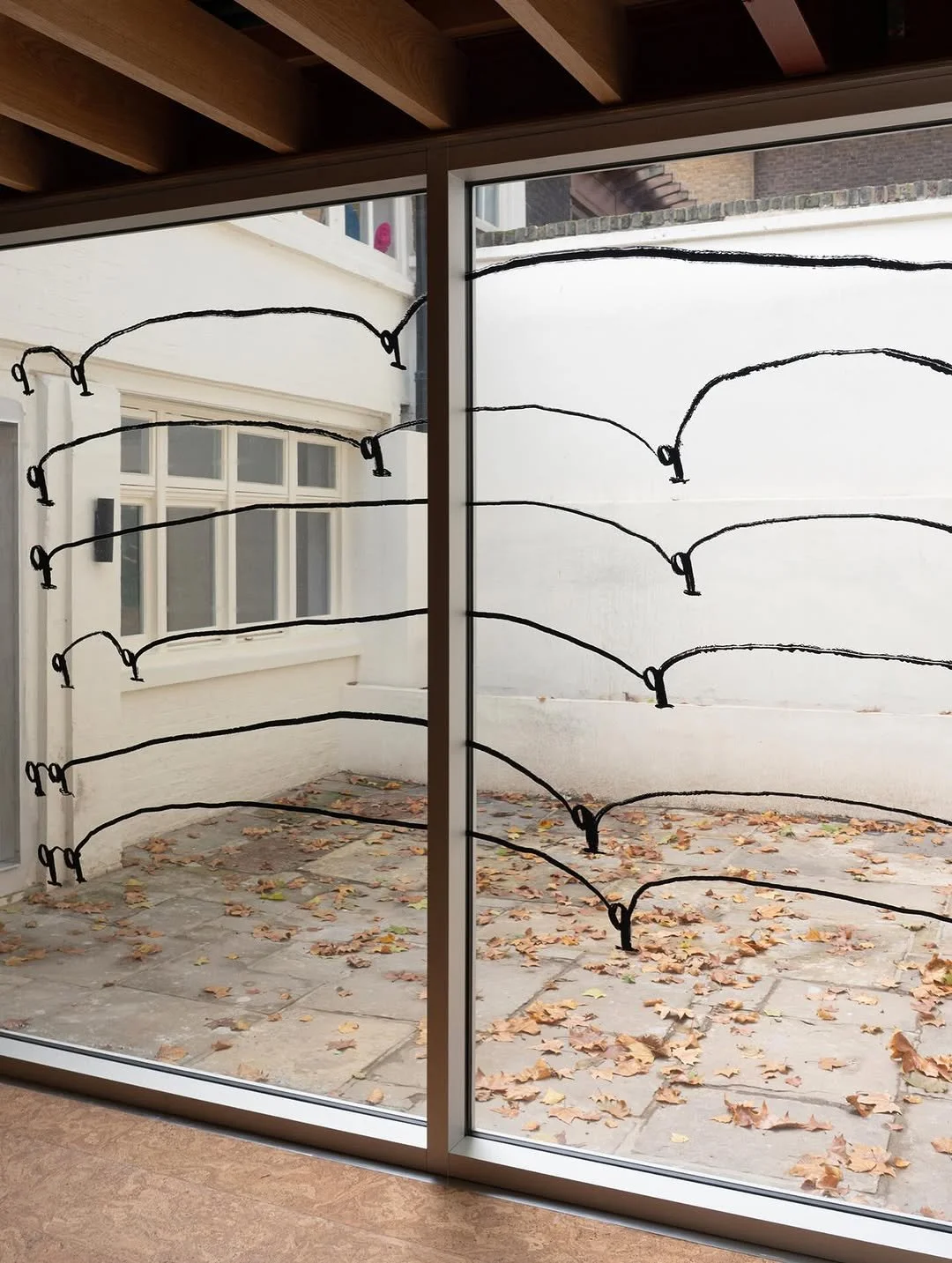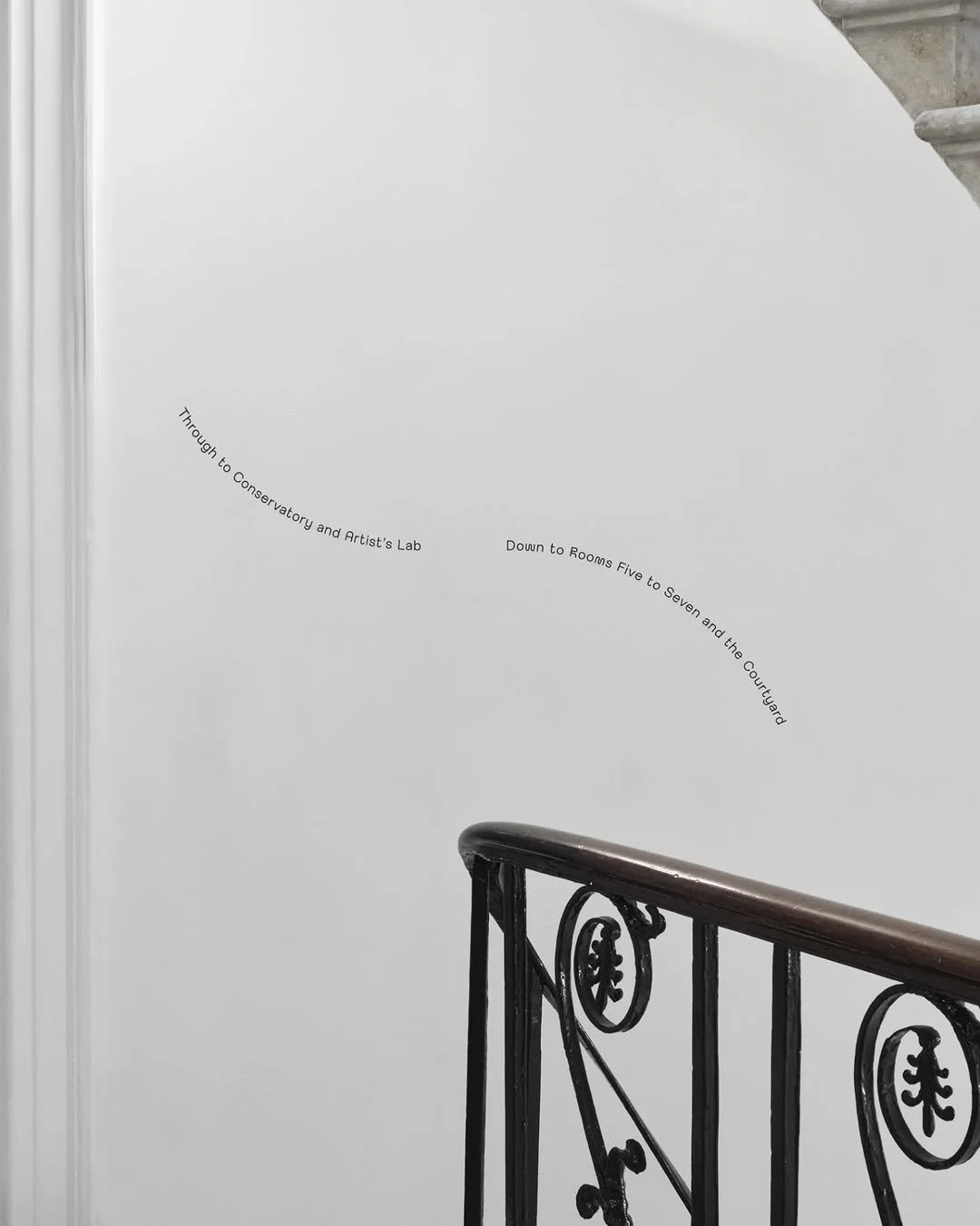Duan Jianyu: Yúqiáo @ YDP
In a Georgian townhouse turned inward, painter Duan Jianyu’s dreamlike parables open YDP, a new nest for East Asian sensibilities in London’s art landscape. It began on a wet London afternoon, the kind that collapses the city’s colours into one long shade of grey. YDP’s new space at Bedford Square sat quietly against the drizzle. Inside, the air shifted: warm light on wood panels, the hush of footsteps on old stairs, the sense that something quietly radical was about to unfold.
For its inaugural exhibition, YDP presents Duan Jianyu: Yúqiáo (The Fisherman and The Woodcutter), a twenty-part painting cycle installed across four floors. It is an intelligent pairing. The work is a journey, and the building makes the viewer move through it. It is contained yet colourful, held within the bones of a Georgian home that still carries a residue of domestic memory.
Duan Jianyu: Yúqiáo, 2025, installation view. Photography: Wenxuan Wang. Image Courtesy YDP.
Handling Duan Jianyu’s painting series, a contemporary take of traditional references, YDP’s curatorial approach, led by the artistic director Billy Tang, is less about imposing narratives and more about allowing them to breathe. This sense of porousness—of thinking alongside, as Tang puts it—felt immediate. In the first room, Duan’s canvases appear like riddles disguised as conversations: an old goat speaking to a young one; woodcutter, monkey, and bride; fish-people who hover between human and symbol. The scenes shift between folklore and déjà vu, the domestic and the mythic. Her technique heightens this sensation. She modulates the density of oil paint so that areas of the canvas dissolve like ink-wash landscapes when she loosens the brush, then tighten into focus when she pulls the image back together. It creates a voided, drifting atmosphere that is quietly striking.
In the corners and along the floor, sculptural works sit almost in hiding. They behave less like sculptures and more like extensions of the paintings, small discoveries that test how far the pictorial world can spill outward. Placed on the floor, All the Water resembles both shoes and boats. Later, the Knife Goddess sculptures appear as bronze and ceramic hybrids with traces of crochet, grounding the exhibition in ritual and craft. Works from Through the Chest, the Appendix, the Eyelashes, the Dimples and Passion, Through the Desert echo the form of Buddha’s hand (a fruit popular in southern China). Sometimes they sit on a table; elsewhere, they are tucked into the fireplace. They evoke domestic warmth and also subtle histories of exchange. These objects never feel static. They are tidal, as if washed ashore from the canvases.
Duan Jianyu: Yúqiáo, 2025, installation view. Photography: Wenxuan Wang. Image Courtesy YDP.
Climbing the staircase, the canvases expand in scale and complexity. Yúqiáo Nos. 4 to 10 open out, the compositions become busier, the narrative threads thicker. Without overstating symbolism, Duan uses enlargement to shift the viewer from observation to immersion. Duan Jianyu’s approach - a contemporary take of traditional references, is more evident here. Not only the Chinese traditional references going back to eleventeenth century, but the tradition of Chinese social realism painting – the backdrop she grew up as an artist is subverted. The rural scene is no longer romanticised but rather surreal or even grotesque.
A small adjoining room contains twelve preparatory sketches, which clarify the internal mechanics of the project. They highlight the secondary characters and motifs that operate like cameos or narrative tools. Seen together, the sketches emphasise that the narrative is constructed rather than simply told. They act as hints, clues embedded in the story’s logic.
Duan Jianyu: Yúqiáo, 2025, installation view. Photography: Wenxuan Wang. Image Courtesy YDP.
Descending to the lower ground floor, the tone shifts unmistakably. Yúqiáo Nos. 11 to 20 introduce denser compositions, heightened colour, and more pointed references.
In the next room, Duan’s palette, both tender and unruly, merges the soft syntax of Chinese social realist painting with the irreverent humour of 1980s animation. Here, Black Cat Detective appears like a mischievous moral question. What struck me most was how Duan subverted the systems she referenced. Rather than using social realism as a didactic device, she folds childhood nostalgia and everyday absurdity into it, loosening its ideological grip. The paintings feel global not because they reference everywhere, but because they breathe through the permeability of lived experience. They carry a post-COVID sense of return, not triumphant but tentative, as if painting itself were a way to re-enter the world after years of reclusion.
As I moved through the townhouse, each floor felt like a new consciousness, a new sentence in Duan’s long paragraph of thought. The works deepen in gravity, culminating in a self-portrait: Duan placing herself inside her own narrative, surrounded by a chaos that feels both real and painted. On one side, a scroll within the composition cites not art history but her own internal landscape. It is a citation turned inward. “Everyone is a fisherman,” she seemed to suggest, each of us negotiating the currents of modern life, both consuming and being consumed. This idea lingered. In an early interview, Duan reflected on how, at the 2003 Venice Biennale, she became aware of the accelerating tide of global consumption: of culture, images, and people. More than twenty years later, that insight anchors Yúqiáo. Yet instead of cynicism, she offers empathy, a way of looking at the spectacle of contemporary life not from above but from within, acknowledging beauty and precarity at once.
Duan Jianyu, Yúqiáo (The Fisherman and The Woodcutter) No. 20, 2024. Oil, acrylic, oil-based marker and oil pastel on canvas. Image courtesy of the Artist and Vitamin Creative Space.
The conservatory presents earlier works from 2014 to 2019, a reverse chronology that sharpens the series’ concerns. Seen after Yúqiáo, these paintings reveal persistent questions: the tension between individual and collective narratives; humour used as strategy rather than effect; the friction of global cultural flows meeting local sensibilities. A lightwell offering a view into the working studio adds an unexpected transparency, a reminder that the exhibition’s quiet complexity is grounded in sustained labour.
Duan Jianyu: Yúqiáo, 2025, installation view. Photography: Wenxuan Wang. Image Courtesy YDP.
The inner courtyard extends this logic. Christine Sun Kim’s mural along the window functions as a prelude to what YDP aims to become, a space where visual, sonic, and social languages intersect. On this rainy afternoon, the rhythm of falling water briefly aligned with the musical notations in her mural, an accidental convergence that underscored the space’s sensorial openness.
Christine Sun Kim, Gapp Year, 2025, installation view. Photography: Wenxuan Wang. Image Courtesy YDP.
Duan described her participation as a gesture of giving back, of returning oil painting, in her words, “to the Western world.” Her decision to begin with Yúqiáo, a title invoking both passage and encounter, mirrors that sentiment. These works do not lecture; they live. They draw from multiple cultural and geographic currents without hierarchy, constructing a contemporary image of life that is both specific and plural.
What I found most moving, however, was what this exhibition means for YDP as a new institution. London’s art landscape has long styled itself as international, but few spaces allow East Asian sensibilities to articulate themselves without translation. YDP feels like an answer to that gap. It does not label itself as “Asian art” or “diaspora discourse”; instead, it enacts those conditions through practice and collaboration. Duan Jianyu: Yúqiáo reminded me that journeys, whether through a house, a painting, or a life, are rarely linear. They circle, fold, and return, leaving behind the quiet residue of belonging.
Signage design of YDP. Photography: Thomas Adank. Image Courtesy of A Practice for Everyday Life. With gently curved lines, this unique signage guides visitors through the space and playful characters.
The journey through YDP felt like a map of possibility, a way to inhabit chaos and make sense of overlapping histories without flattening them. In Duan’s world, everyone is a fisherman. And perhaps YDP, at this early moment, is the boat: small, steady, and ready to move into new waters. It was one of the best exhibitions I saw this year, not because it shouted, but because it spoke in a language that felt instinctively ours. A language of nuance, humour, and belonging, spoken softly in the heart of London. Stepping back into the rain, the townhouse glowed faintly behind me, a small but luminous pocket on London’s art map.
Duan Jianyu: Yúqiáo is on view at YDP, 19 Bedford Square, until 20 December 2025. Entry is free, and full details can be found on YDP’s website.
Alice Kim
Interviews Co-Editor, MADE IN BED

